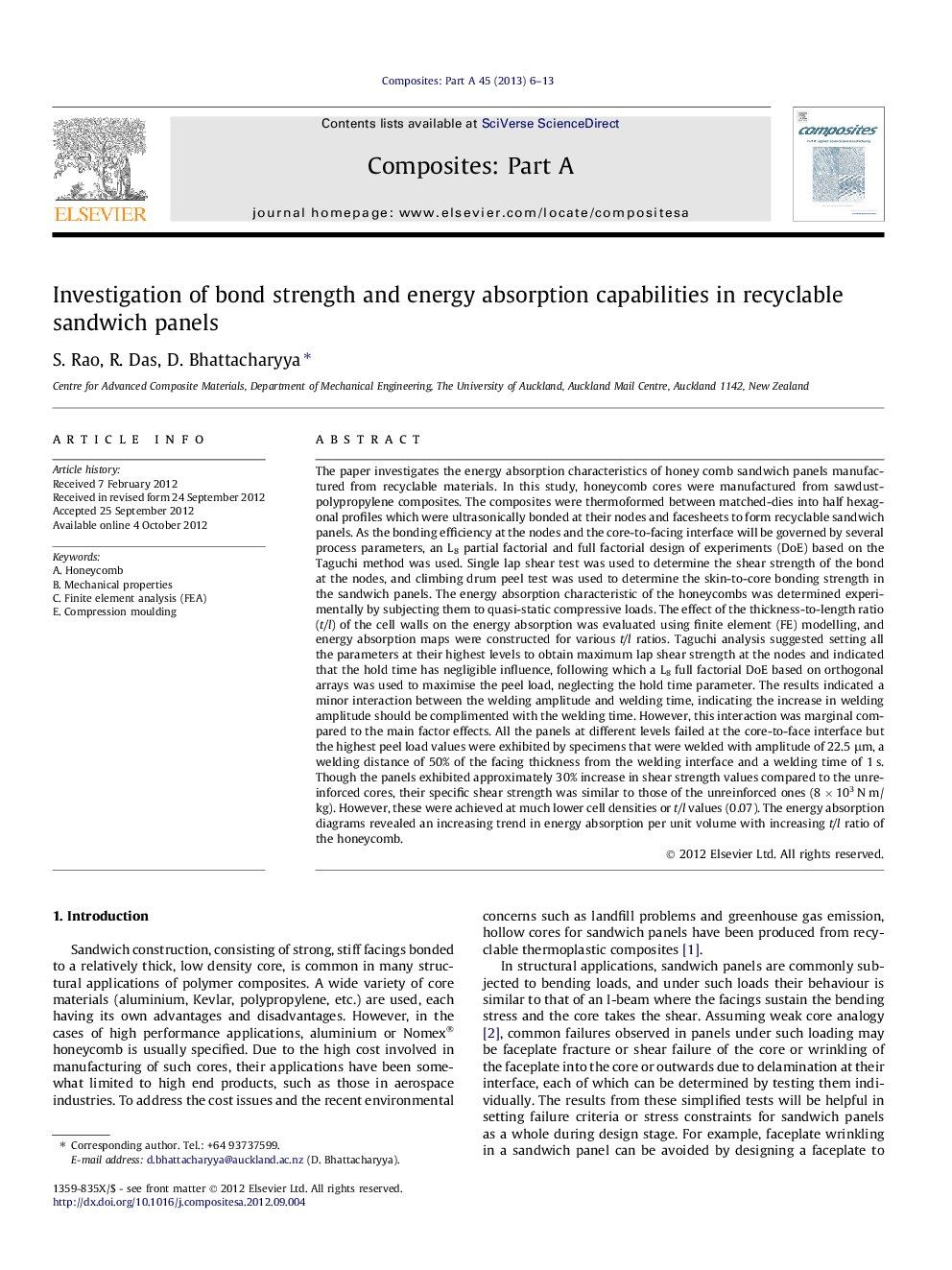| کد مقاله | کد نشریه | سال انتشار | مقاله انگلیسی | نسخه تمام متن |
|---|---|---|---|---|
| 1466289 | 1509926 | 2013 | 8 صفحه PDF | دانلود رایگان |

The paper investigates the energy absorption characteristics of honey comb sandwich panels manufactured from recyclable materials. In this study, honeycomb cores were manufactured from sawdust-polypropylene composites. The composites were thermoformed between matched-dies into half hexagonal profiles which were ultrasonically bonded at their nodes and facesheets to form recyclable sandwich panels. As the bonding efficiency at the nodes and the core-to-facing interface will be governed by several process parameters, an L8 partial factorial and full factorial design of experiments (DoE) based on the Taguchi method was used. Single lap shear test was used to determine the shear strength of the bond at the nodes, and climbing drum peel test was used to determine the skin-to-core bonding strength in the sandwich panels. The energy absorption characteristic of the honeycombs was determined experimentally by subjecting them to quasi-static compressive loads. The effect of the thickness-to-length ratio (t/l) of the cell walls on the energy absorption was evaluated using finite element (FE) modelling, and energy absorption maps were constructed for various t/l ratios. Taguchi analysis suggested setting all the parameters at their highest levels to obtain maximum lap shear strength at the nodes and indicated that the hold time has negligible influence, following which a L8 full factorial DoE based on orthogonal arrays was used to maximise the peel load, neglecting the hold time parameter. The results indicated a minor interaction between the welding amplitude and welding time, indicating the increase in welding amplitude should be complimented with the welding time. However, this interaction was marginal compared to the main factor effects. All the panels at different levels failed at the core-to-face interface but the highest peel load values were exhibited by specimens that were welded with amplitude of 22.5 μm, a welding distance of 50% of the facing thickness from the welding interface and a welding time of 1 s. Though the panels exhibited approximately 30% increase in shear strength values compared to the unreinforced cores, their specific shear strength was similar to those of the unreinforced ones (8 × 103 N m/kg). However, these were achieved at much lower cell densities or t/l values (0.07). The energy absorption diagrams revealed an increasing trend in energy absorption per unit volume with increasing t/l ratio of the honeycomb.
Journal: Composites Part A: Applied Science and Manufacturing - Volume 45, February 2013, Pages 6–13